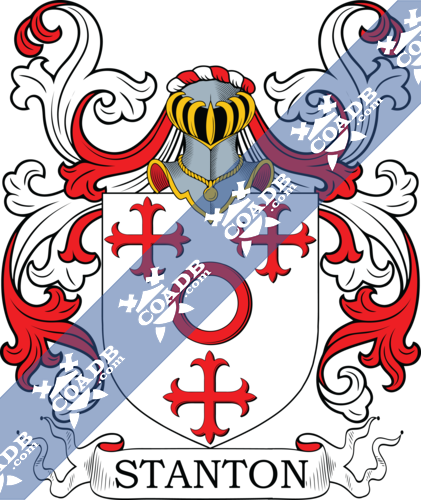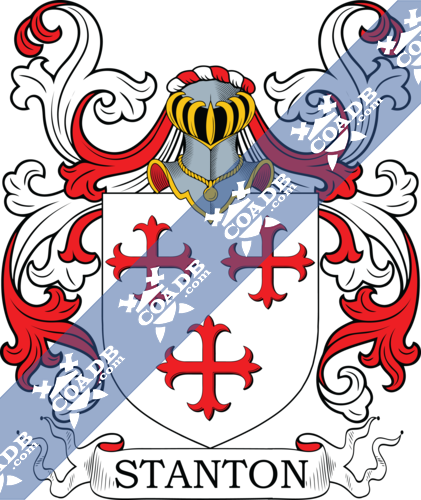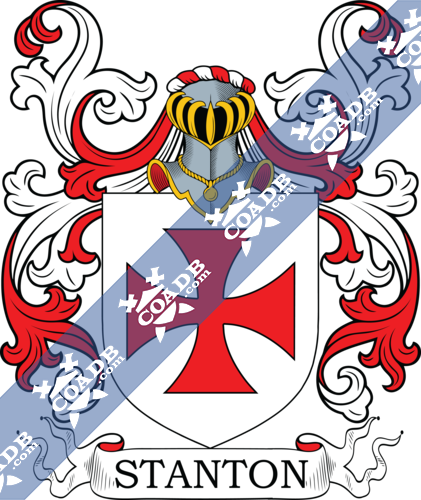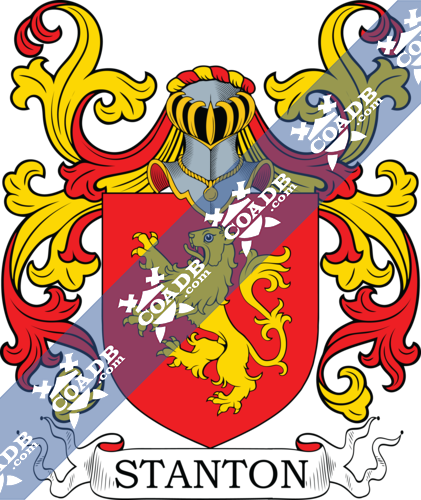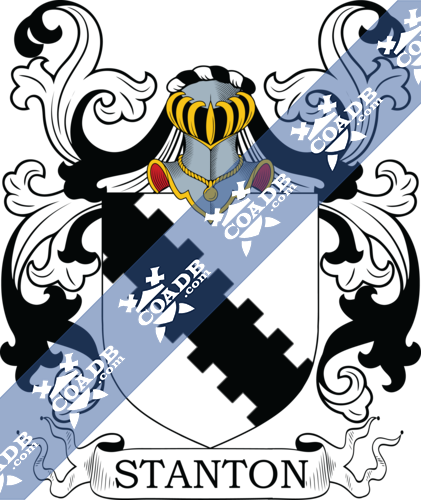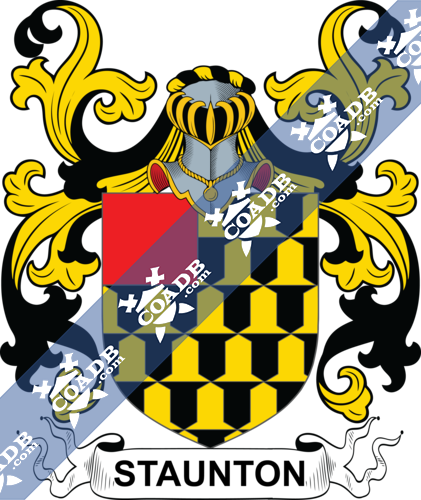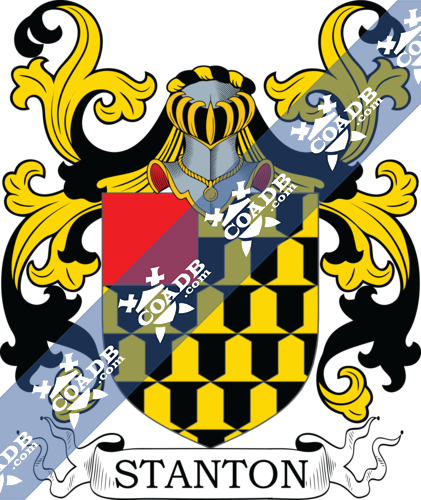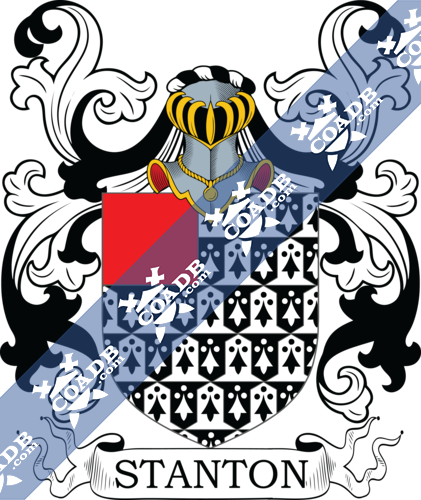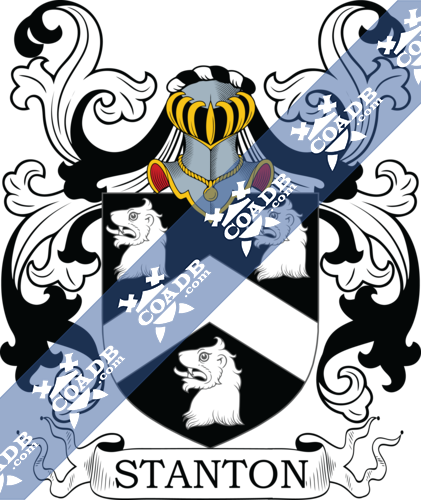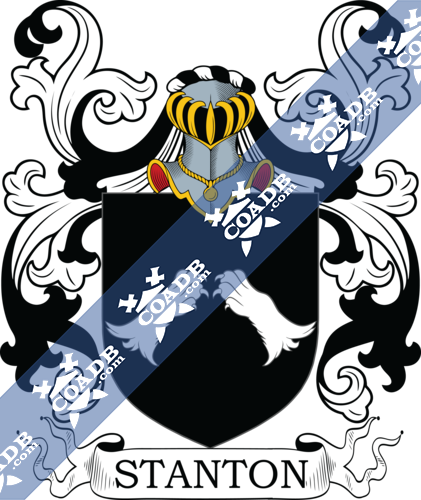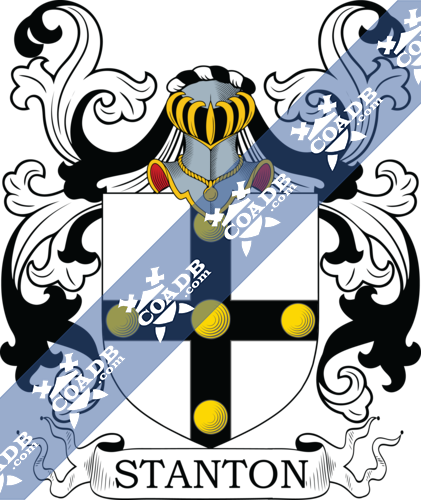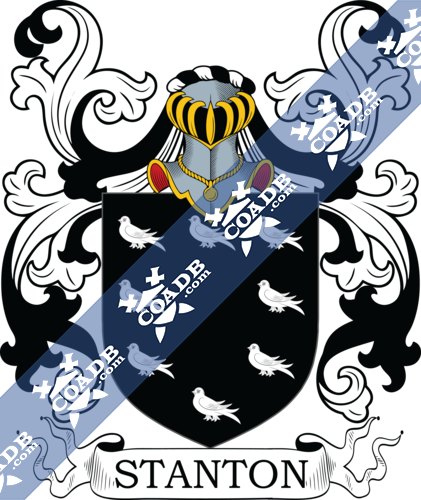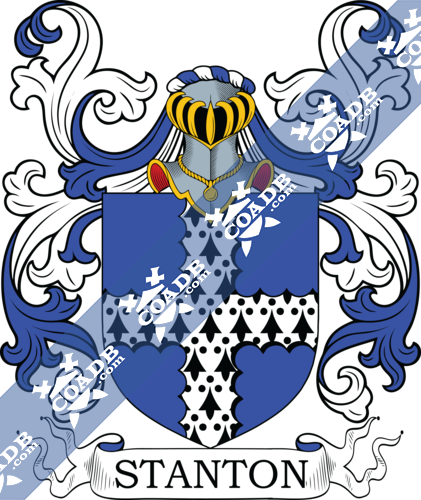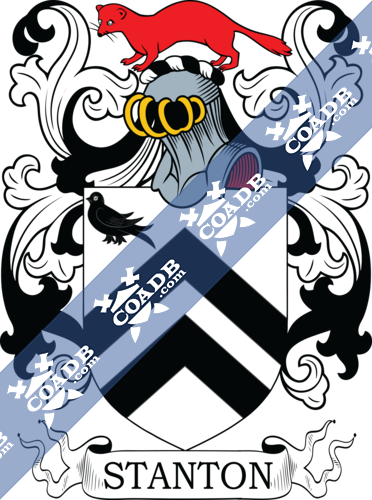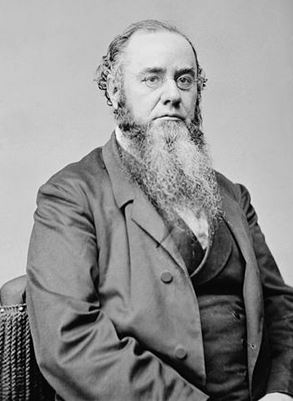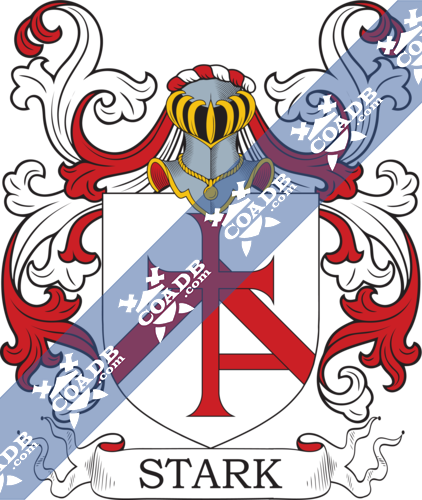Stanton Family Crest, Coat of Arms and Name History
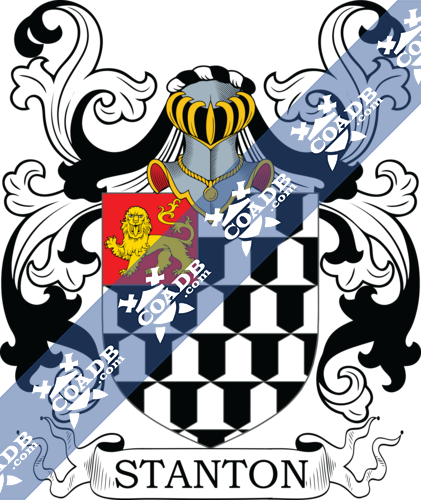
Stanton Coat of Arms Gallery
Don’t know which Coat of Arms is yours?
We can do a genealogical research. Find out the exact history of your family!
Learn MoreThis surname is of local origin meaning “of Stanton”, which are towns in counties Derby, Stafford, and Northumerland, as well as parishes in counties Gloucester, Suffolk, Wilts, Bucks, Derby, Somerset, Dorset, and Oxford. The name is also well established in Ireland. Spelling variants include Staunton ,Stainton, Stanten, and Stantyn. It comes from the word stan or stein (stone) and ton (hill or town). The Stanton population in Scotland can be found in Angus, Lanarkshire, and Midlothian.
It comes from the Old English word stun (stan) and tun (farmstead). One author notes it comes from the Anglo-Saxon word Stantun and claims it means the stone dwelling. The word Stantun occurs frequently in the deeds and records of the Anglo-Saxon era. It derives from towns that were built on stony grounds. In his book, Surnames of the United Kingdom, writes: “Stanton is the usual form in the 13th-cent. Hundred-Rolls. At Stanton-Drew, Soms., are ‘circles of large stones’; at Stanton-Harcourt, Oxon, are ‘a number of large stones called the Devil’s Coits’; and in descriptions of several of our Stantons particular mention is made of stone-quarries.”
Early notables include Alice de Stanton (Cambridge), Walter de Stanton (Oxfordshire), and Edmund de Stanton (Wiltshire), who were recorded in the Hundred Rolls of 1273 AD. The first recorded spelling of was Godwine aet Stantune in 1055 AD. Later recorded Stantons include Francis Stanton in Bedford and Henry Staunton or Stanton in Cornwall. Early marriages involving this last name include Arthur Stanten to Elizabeth Clapen on 1624 at St. Dionis Backchurch.
The book “A dictionary of English Place-Names”, by A.D. Mills, notes that this surname was originally found in Nottinghamshire where the family held seat for hundreds of years, and served as the Lords of the manor of Staunton, with Sir Brian Staunton being the first Lord Stanton, and lived during the time of King Edward the Confessor in 1047 AD.
Early American settlers bearing this surname include Thomas Stanton, who left the port of London to Virginia aboard the Bonaventure in January of 1634, John Stanton (Virginia 1623), Christopher Stanton (Virginia 1638), Theop Stanton (Virginia 1702), John Stanton (New York 1811), and Frederick Stanton (Mississippi 1818). Thomas Stanton (1616-1677) was a trader and interpreter who was one of the original settlers of Hartford, CT. He married Anna Lord and had numerous children with her: Thomas Jr. John, Mary, Hannah, Joseph, Daniel, Dorothy, Robert, Sarah, and Samuel, who were all born between 1638 and 1657.
The surname is discussed at considerable length in the book New England Families by William Richard Cutter. It states that “Robert Stanton, an early settler of Newpork, Rhose Island, was the progenitor of the Honorable Edwin M. Stanton, of Lincoln’s cabinet; died in Newport in 1672, aged 73. There was a John Stanton in Virginia in 1635 and Thomas Stanton aged twenty, sailed for Virginia in 1635 in the merchantman Bonaventura. The family historian thinks he went to Virginia, but many ships whose records state Virginia was the destination came to New England. The “Bonaventure” may have landed some passengers in Virginia, others in Connecticut and Boston.”
Family mottoes include dum spiro spero, which means “white I have breath I hope”. Notes on grantees of arms with this surname: 1) of Bristol and Plymouth, co. Devon, [1825].
Bernard Burke’s Book, The Landed Gentry, discusses one branch of this family: Stanton of the Thrupp. The lineage traces back to Joseph Stanton, who married Elizabeth Page, who had two sons: William and John. William (died 1841) married Anne Caruthers in 1785 and had eight children: William Henry, John, Joseph, Charles, Edward, Anne, Charlotte, and Mercy. He was succeeded by his son William Henry born (1790-1870) who married JaneSmith and had children: Reverend William Henry (1824), Alfred John, Major-General Edward, Lieutenant Colonel Frederick Smith, and Emily Jane. William was succeeded by Alfred Stanton (born 1823) who married Anna Alexander and had the following children: Elizabeth Jane, Isabel Margaret, and Beatrice Harriet. They bore the following arms: Argent, two chevrons within a border engrailed sable.
Blazons & Genealogy Notes
1) (London). Vairé ar. and sa. on a canton gu. a lion pass. guard. or.
2) (co. Somerset). Vairé or and sa. a canton gu.
3) (co. Stafford). Vairé erm. and ermines, a canton gu.
4) (Clovelly, co. Devon; the heiress m. Crewkernt). Sa. a chev. betw. three lions’ heads erased ar.
5) Ar. two chev. sa. in the dexter chief a martlet of the second. Crest—An ermine gu.
6) Sa. two lions’ paws in chev. ar.
7) Ar. on a cross sa. five bezants.
8) Sa. an orle of martlets ar.
9) Az. a cross engr. erm.
10) Ar. an annulet betw. three crosses flory gu.
11) Ar. three crosses flory (another, pattée) gu.
12) Ar. a cross pattée gu.
13) Gu. a lion ramp. or.
14) Ar. a bend crenellée sa.

